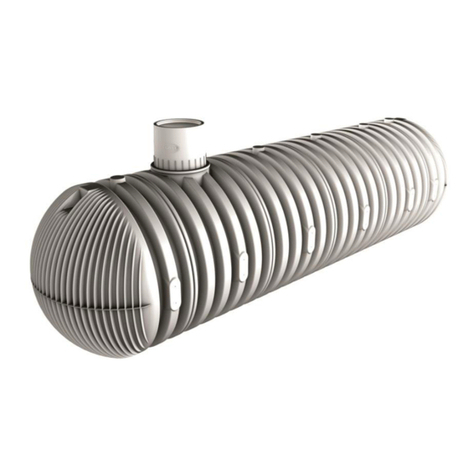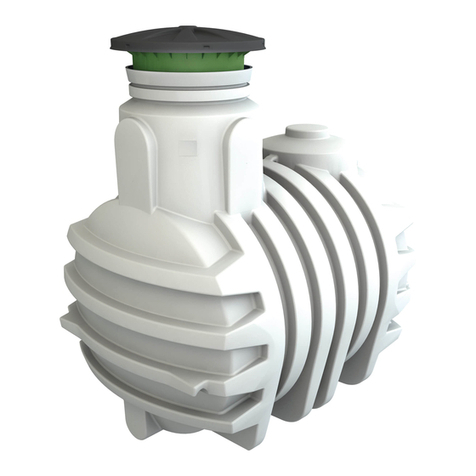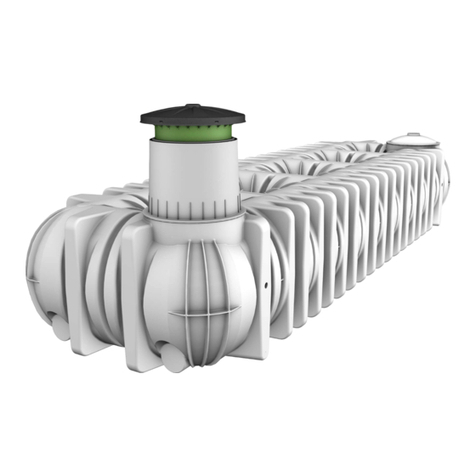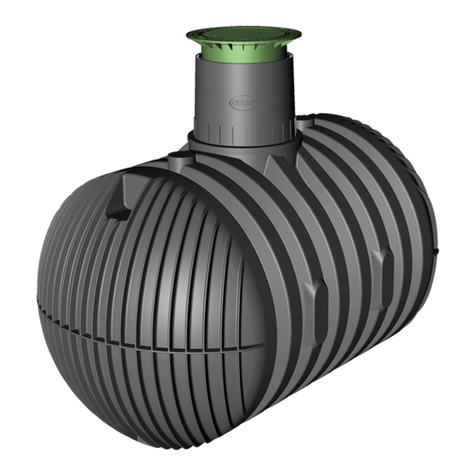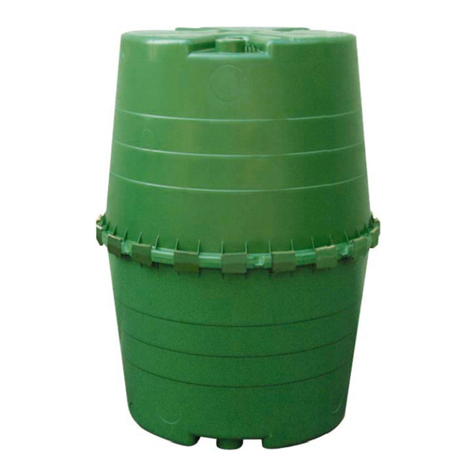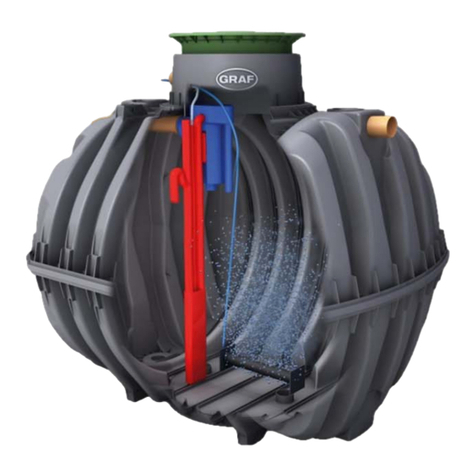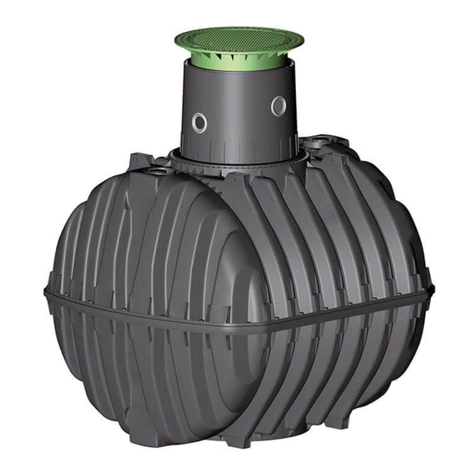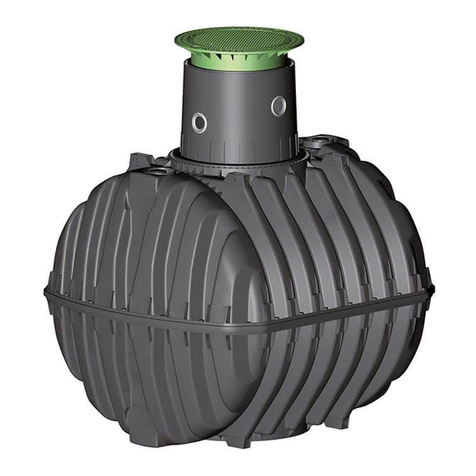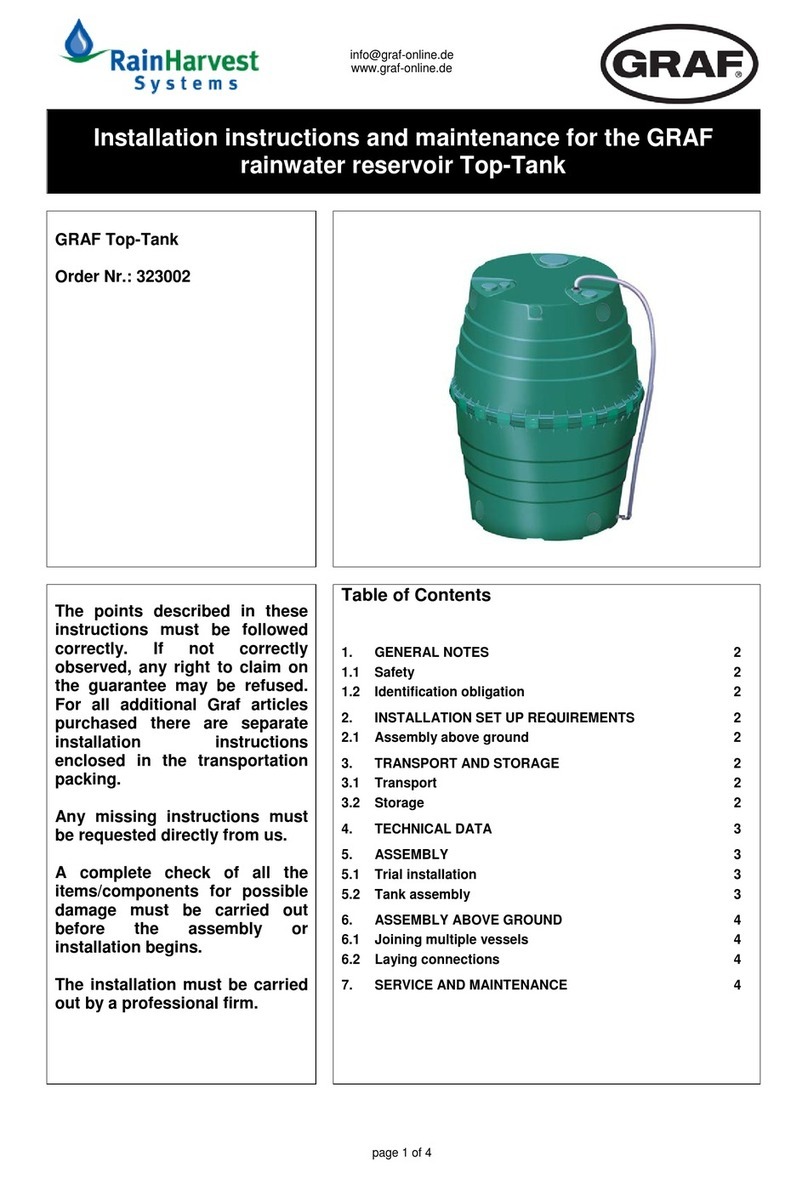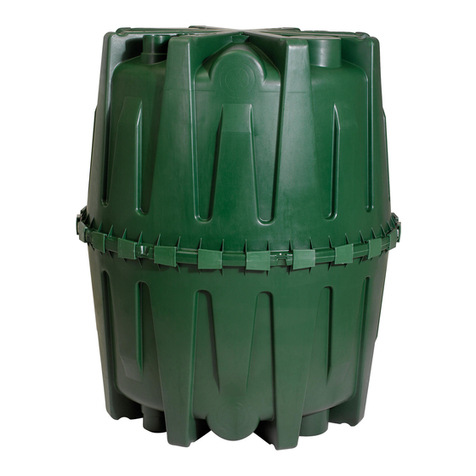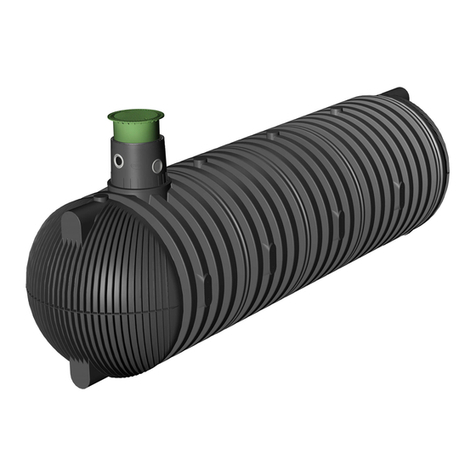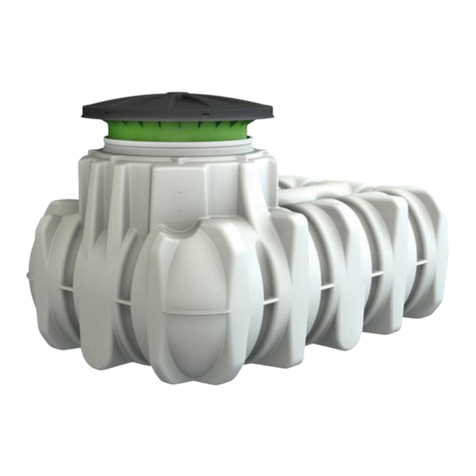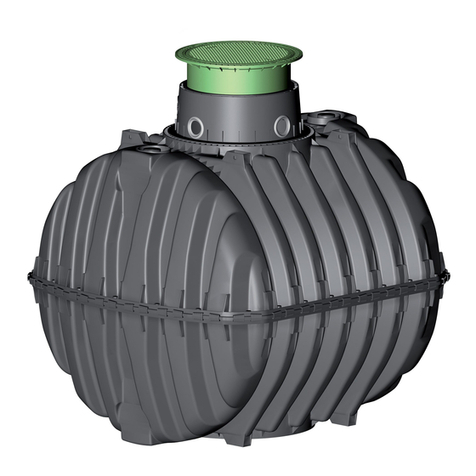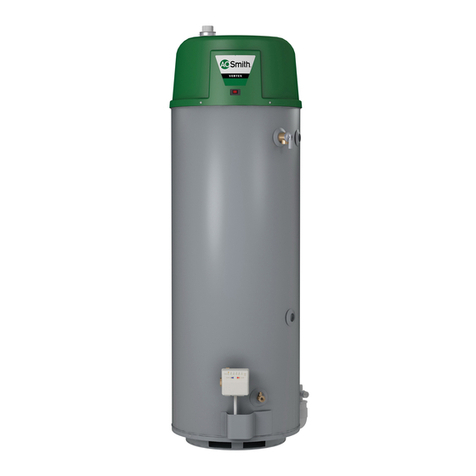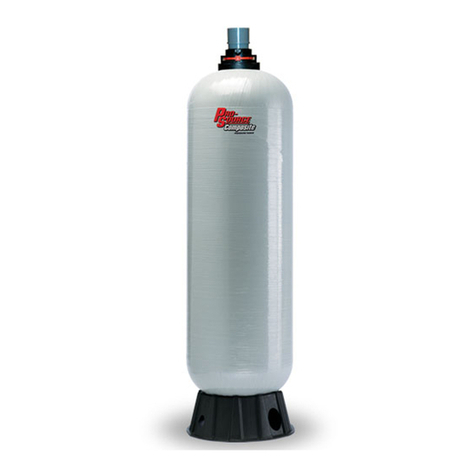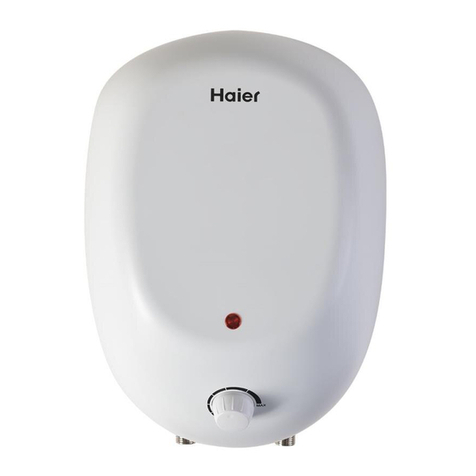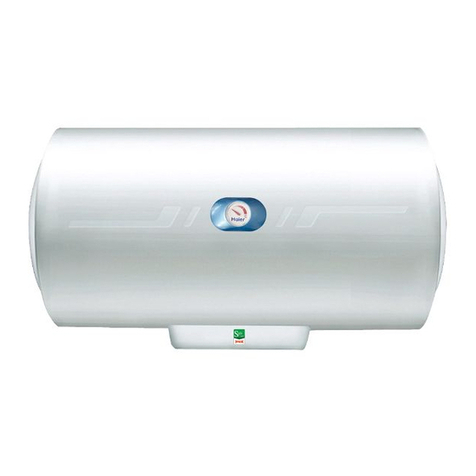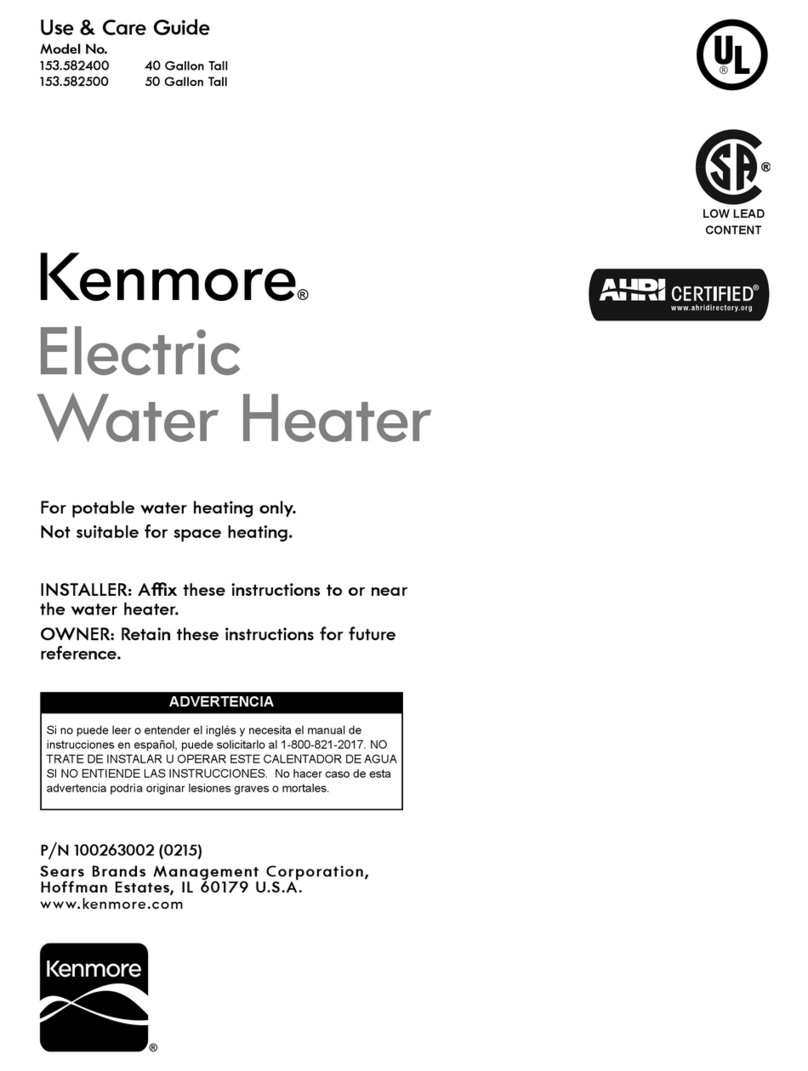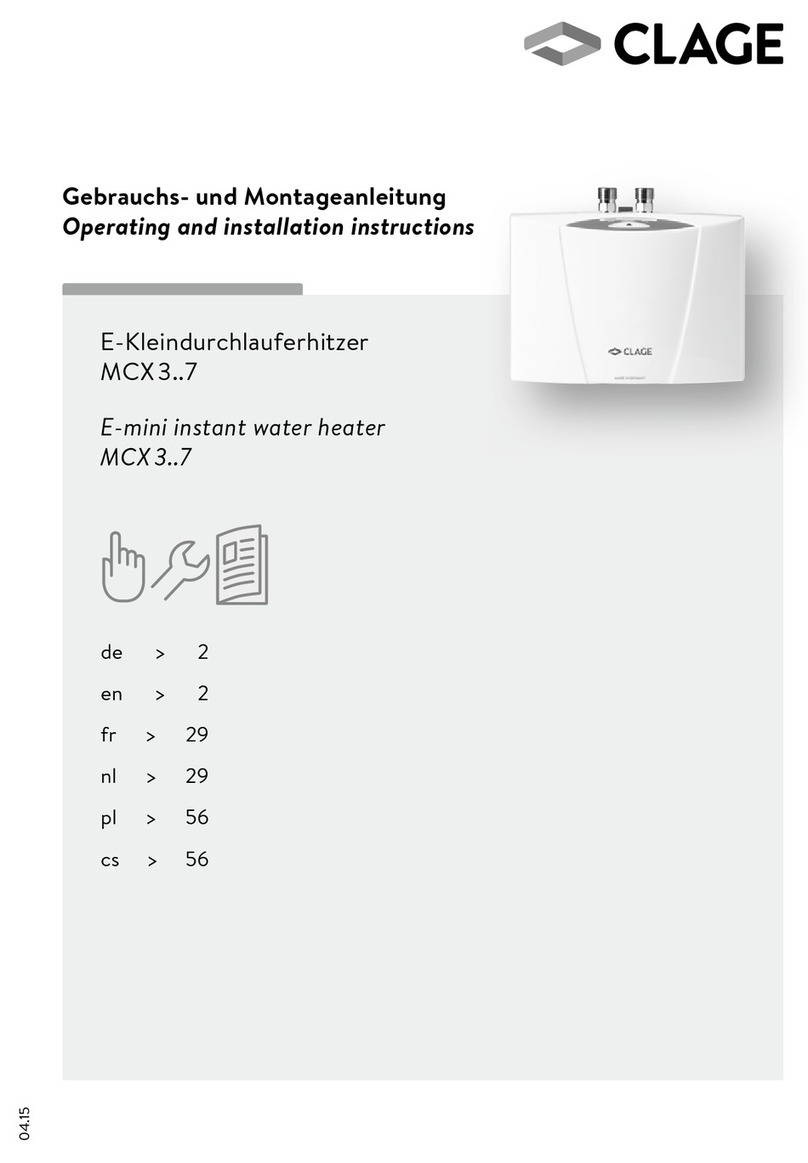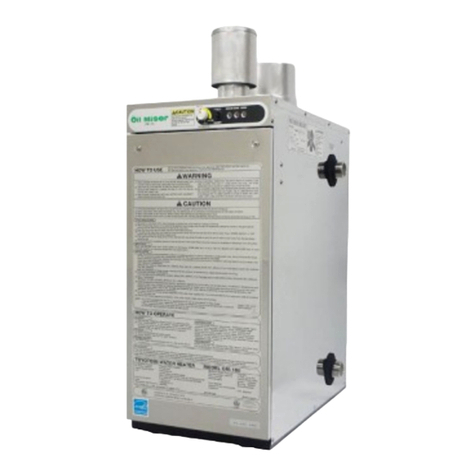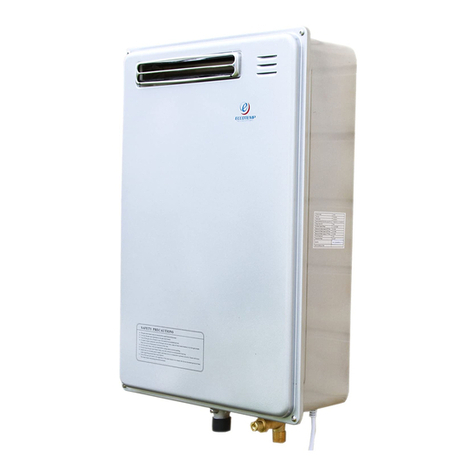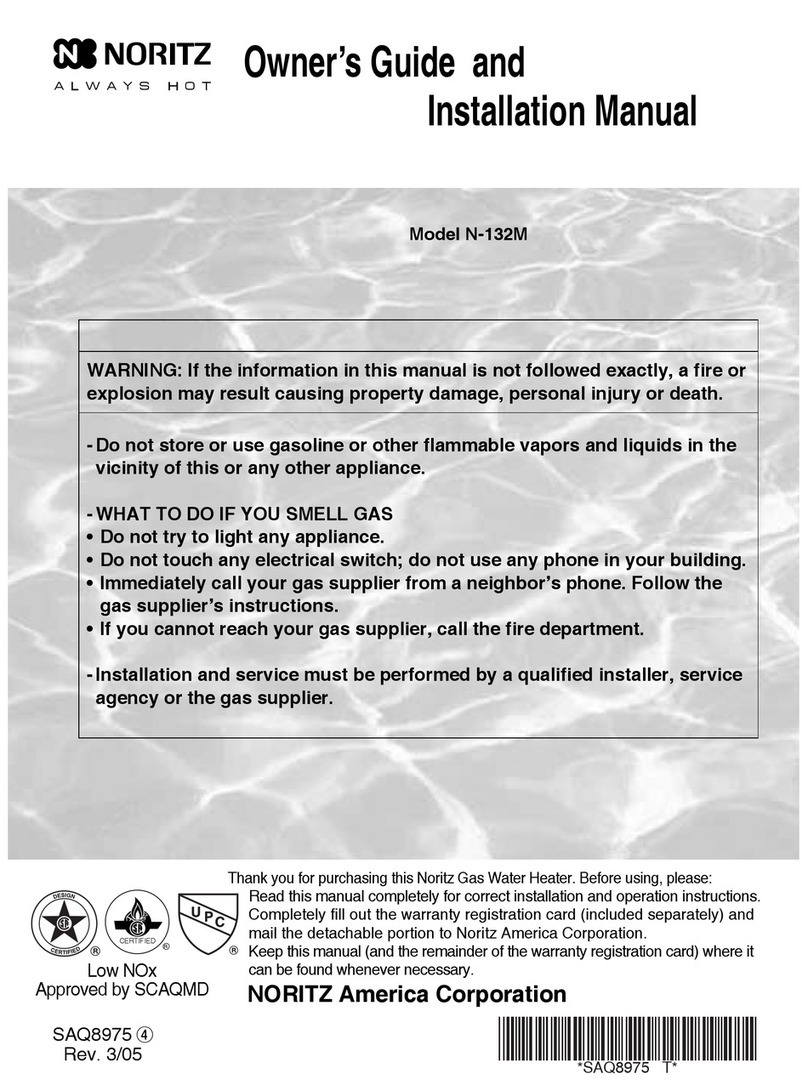
4 / 18
1.1 Safety
As Occupational Health and Safety legislation differs in each state and territory, it is necessary to refer to
all relevant Occupational Health and Safety legislation, regulations and Australian Standards in your state
or territory at all times during installation, assembly, servicing and repair of the Graf Platin rainwater
storage tank systems.
Current statutory regulations and all relevant Australian standards shall be taken into consideration at all
times. The system and any of its individual parts must be installed by a licensed person. Installation by a
nonlicensed person may void warranty.
The entire system must be shut down before any maintenance can be undertaken. Once any
maintenance is completed the tank must be properly sealed/locked by means provided with the tank to
prevent future unauthorized entry.
Graf offers a wide range of accessories which all match each other. The use of non Graf accessories may
lead to the voiding of warranty and any subsequent claims of liability from any resulting damages.
1.2 Identification of water pipes and outlets
All service water pipes and outlets leading from the Graf water tank should be identified in accordance
with AS/NZS3500.1:2003-Section 9 and other relevant local plumbing regulations to avoid inadvertent
connection with the drinking water supply.
In order to avoid the wrong connection between the drinking water and the rain water pipe work, all
conduits and tappings of rain water have to be marked clearly with “RAINWATER” in writing and be in
accordance with local standards.
All non-drinking tank water outlets should be clearly marked “RAINWATER” and we recommend they be
installed with vandal proof taps. Depending on local laws, rain water may or may not be suitable for
human consumption and/or use for personal hygiene.
1.3 Maintenance
In the event of work needing to be carried out inside the tank, as Occupational Health and Safety
legislation differs in each state and territory, reference should be made to confined spaces legislation in
your state or territory.
1.4 Site
As Occupational Health and Safety legislation differs in each state and territory, reference should be
made to excavation and trenching legislation in your state or territory with respect to the use of excavation
equipment and relevant trenching legislation in reference to shoring, battering and depth specific
regulations.
1.5 Lifting of Tanks
Occupational Health and Safety legislation and regulations differ in your state and territory, therefore
reference should be made to your state or territory legislation when lifting, handling or moving of Graf
water tanks.
RAINWATER
Continuous green pipe marker
for pipe work less than 40mm
diameter used to identify.
Example of typical rainwater
pipe work rainwater signage.
